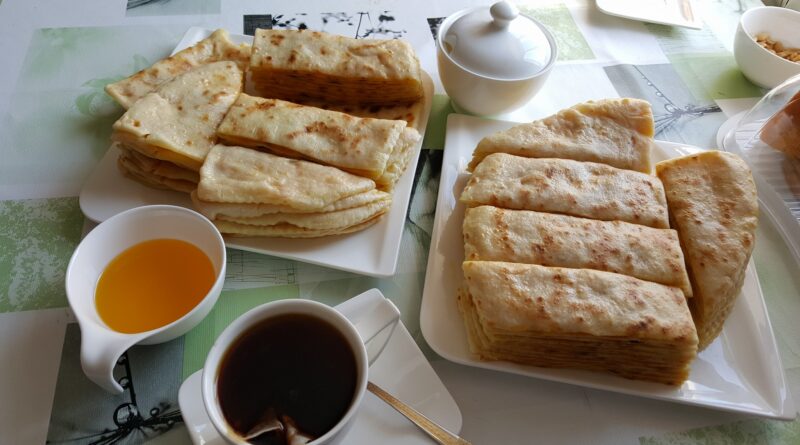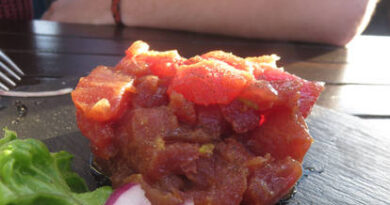Msemen
Embracing the Art of Msemen: Morocco’s Flaky and Delicious Flatbread
Introduction: In the vibrant mosaic of Moroccan cuisine, few dishes capture the essence of the country’s culinary heritage quite like Msemen. This beloved flatbread, known for its flaky layers and buttery texture, has been a staple in Moroccan households for generations. In this article, we delve into the world of Msemen, uncovering its origins, ingredients, preparation methods, and cultural significance.
Origins and History: Msemen traces its origins to the rich culinary traditions of Morocco, where it has been enjoyed for centuries as a versatile and delicious bread. The exact origins of Msemen are shrouded in mystery, but it is believed to have originated in the Atlas Mountains region, where it was traditionally prepared by Berber tribes.
Historically, Msemen was a staple food for nomadic tribes and rural communities, providing sustenance during long journeys and harsh winters. Over time, it became a cherished part of Moroccan cuisine, enjoyed by people from all walks of life across the country.
Ingredients: The ingredients used in making Msemen are simple yet essential to achieving its distinctive texture and flavor. The primary ingredients include flour, semolina, yeast, salt, water, and butter or oil.
The dough for Msemen is made by combining flour, semolina, yeast, salt, and water to form a soft, elastic dough. This dough is then divided into small portions, which are rolled out into thin squares or rectangles. Butter or oil is spread over the surface of each square, which is then folded into layers to create the characteristic flakiness of Msemen.
Preparation Method: The preparation of Msemen is a labor-intensive process that requires patience, skill, and precision. To begin, the dough is made by mixing together the flour, semolina, yeast, salt, and water until a smooth, elastic dough is formed. This dough is then kneaded for several minutes to develop the gluten and improve the texture of the bread.
Once the dough is ready, it is divided into small portions, which are rolled out into thin squares or rectangles on a lightly floured surface. Butter or oil is spread over the surface of each square, which is then folded into layers to create the flaky texture of Msemen.
The folded squares are then cooked on a hot griddle or skillet until golden brown and crispy on the outside, while still soft and tender on the inside. The cooked Msemen is then served hot, often with a drizzle of honey or a sprinkle of sugar for added sweetness.
Cultural Significance: Msemen holds significant cultural importance in Moroccan society, where it is cherished as a symbol of hospitality, generosity, and tradition. It is a dish that brings families and communities together around the dining table, fostering a sense of connection and shared heritage.
In addition to its cultural significance, Msemen also holds practical value, serving as a versatile and portable food that can be enjoyed on its own or as an accompaniment to a wide variety of dishes. It is often served alongside traditional Moroccan dishes such as tagines, soups, and salads, adding a touch of warmth and comfort to any meal.
Variations and Regional Differences: While the basic recipe for Msemen remains the same across Morocco, there are variations and regional differences that reflect the diverse culinary traditions of the country. In some regions, Msemen may be prepared with additional ingredients such as herbs, spices, or cheese, adding depth and complexity to the flavor.
In the northern regions of Morocco, for example, Msemen may be served with a savory filling of minced meat, onions, and spices, while in the southern regions, it may be enjoyed with a sweet filling of almonds, honey, and cinnamon. These regional variations highlight the versatility of Msemen and the creativity of Moroccan cooks.
Conclusion: In conclusion, Msemen is more than just bread – it is a celebration of Moroccan cuisine, culture, and heritage. From its humble origins to its cherished place on dining tables across the country, Msemen embodies the spirit of tradition, community, and shared identity.
Whether enjoyed as a simple snack or as part of a festive feast, Msemen continues to captivate the senses and bring people together through its irresistible flavors and timeless appeal. So the next time you find yourself craving a taste of Morocco, be sure to seek out this culinary masterpiece and experience the magic of Msemen for yourself.



